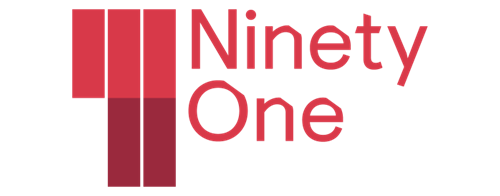Haroon Bhorat Chair: Investment Committee at Sygnia
On 2 April, US President Donald Trump announced a series of tariff increases the US intended to impose on 60 countries across the global economy. In one speech, he changed the global trading system of low tariffs and free trade that had existed for over 70 years. The initial announcement was a base tariff rate of 10% on all economies, with additional “reciprocal” tariff hikes ranging from 11% to 50% for many US trading partners. This has morphed into a tariff war between China and the US – their current tariff rates on each other’s products are 125% and 145% respectively. A series of exemptions was provisionally applied to some exports into the US, most notably for microelectronics components.
Trump has also allowed a 90-day reprieve so that bilateral negotiations can take place.
To understand the effect of the tariff hikes on South Africa’s economy, it is first necessary to understand the size and shape of our trade relations with the US. South Africa exported $13 billion worth of goods to the US in 2023 – about 3.64% of our GDP. To put that in perspective, South Africa’s total exports to the rest of the world makes up 33% of our GDP. Our exports to the US account for about 7% of total exports, making the US our second-largest trading partner after China. Trump is particularly fixated on those economies that run trade surpluses with the US. South Africa’s is over $8 billion, meaning we export more than we import from the US. This appears to be at the core of Trump’s negotiation strategy with South Africa, and his administration is focused on exacting concessions for specific US products to increase their market access in South Africa. While South Africa’s membership in the African Growth and Opportunity Act (AGOA) gives us preferential access to the US market, our AGOA exports constitute about 20% of our total exports to the US. Thus, most of SA’s exports to the US are not AGOA-related.
Under Trump’s 90-day reprieve, South Africa is tariff-exempt on platinum, gold, chrome, copper, manganese and aluminium. Rough calculations suggest that 49% of all South African exports to the US will be exempt, a significant reprieve for our existing trade relations with the US. It does, however, put a spotlight on those products in the remaining 51% of our export basket, where the automobile industry and agricultural exports are likely to be hit by higher tariffs. It is thus the impact of tariffs on these industries that should be the focus of our discussion and policy response.

The macro model (see chart) shows the South African Reserve Bank’s (SARB) latest Monetary Policy Review estimates. Using the assumption of the cancellation of AGOA and a 25% tariff adjustment (Scenario 2) suggests a decline in exports by 0.56%, deflation of 0.04%, a nominal repo rate reduction of 0.08% and a drop in real GDP by 0.23 percentage points. Under this model, a projected 1.8% growth rate for 2025 declines to 1.57%. While this may not seem like a large drop, it would be significant given South Africa’s already anaemic growth rates. It is interesting to note, however, that deflation and a repo rate decline further from baseline are also likely outcomes.
A quick analytical sidebar: Politicians run the risk of losing an election if they focus only on national and macro trends and ignore sub-national trends. For example, if poverty levels decline nationally, specific regions or sub-groups may nevertheless experience an increase in poverty – an election could be lost by ignoring these sub-national trends.
As a country, we run the risk of ignoring the sector-specific outcomes of the new tariff regime. I am particularly concerned about the automobile and agriculture sectors, where economic strife may unfold in specific regions or smaller towns – such as the Eastern Cape auto corridor and the small citrus towns of the Western Cape.
In trying to obviate these potential real economic losses, policymakers must get ahead of the curve. To do so, they must assist affected companies to access foreign markets outside of the US – in particular those that have not been traditional export markets. The Middle East and Asia are obvious examples for South African agricultural exports. Furthermore, state support directed at ensuring the tariff hikes are buffered in some way – through supply[1]side support measures, for example – must be carefully planned and targeted to benefit those exporters that need it most. The hard work of protecting our exports must now begin in earnest!

ENDS

























































































